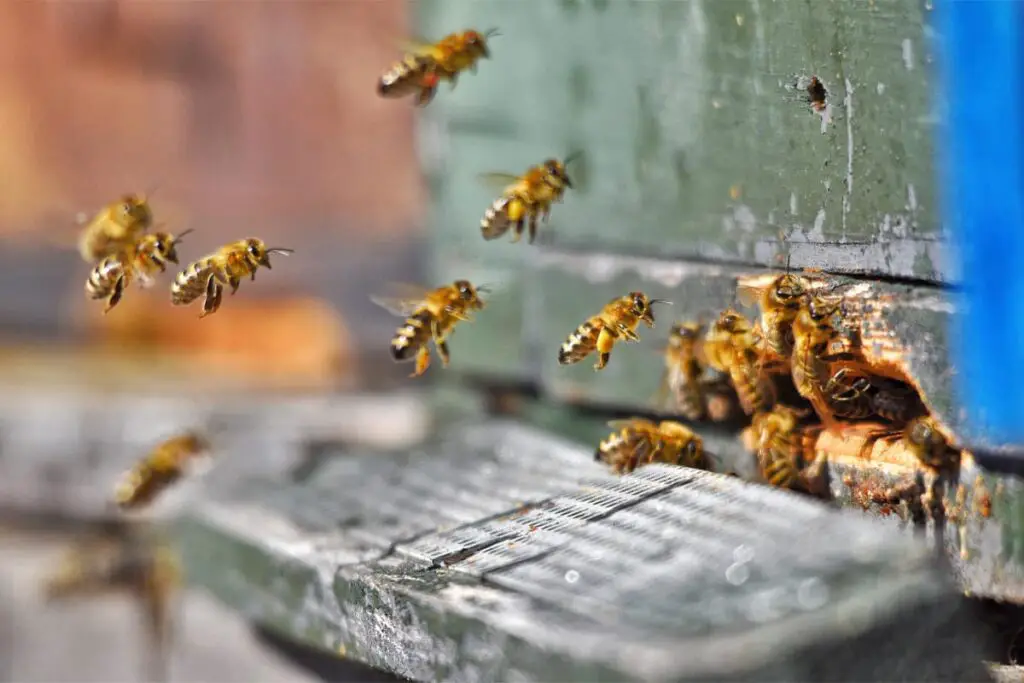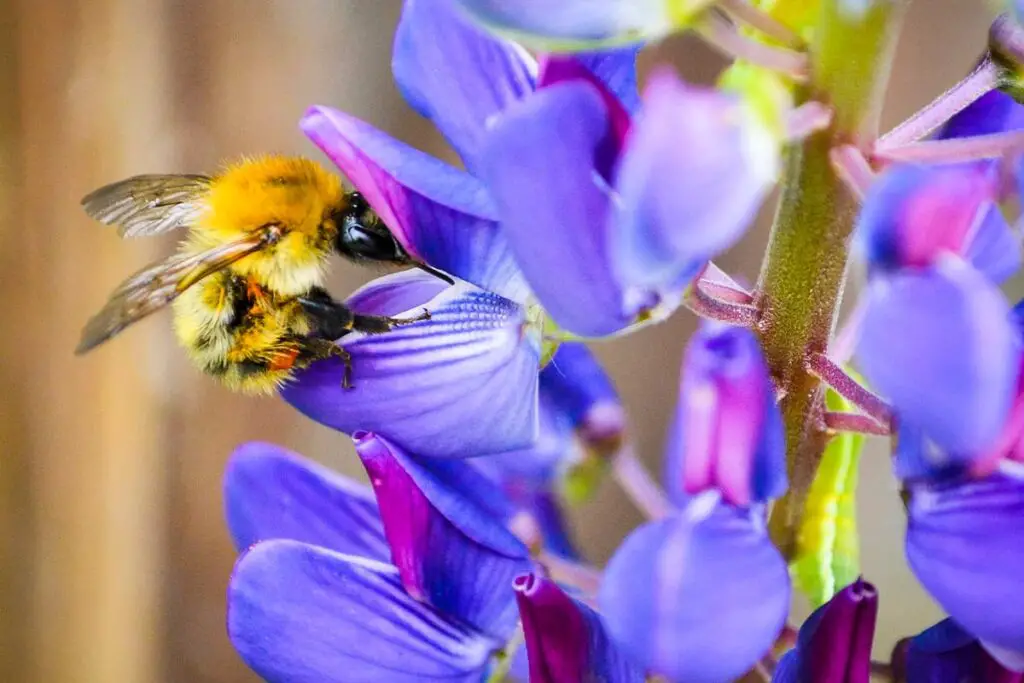
Honey is not the only substance with fascinating properties that honey bees will produce. They also famously make a material called beeswax. Just like honey, beeswax has been used to make medicines for generations. In modern times it is used for making candles, polishers, and skincare products. These are some of the uses that people have found for beeswax, but why do bees make the wax in the first place?
Bees make wax for a variety of important purposes within a hive. It is used to construct the cells in which the bees will store their honey, lay their eggs, and grow larvae. Beeswax is also one of the most important structural elements within a hive, making it strong enough to resist damage.
Let’s talk about beeswax. We’ll explore why bees make it, how it is produced, and whether or not it actually is wax.
Why Do Bees Need Wax?
Beeswax is a substance that no other animal produces, and bees will rely on their capacity to make it for a variety of important reasons. Perhaps most obviously, the wax makes the hive a strong shelter for the purposes of defense. Wax is resistant to the damage and weathering a hive may experience in its lifetime.
For example, tropical stingless bees will mix their wax with resin to construct entrance tubes for their nests within the trunks of trees. This prevents their enemies from easily entering the nests, and makes defending the entrance much more effective.
Additionally, this unique combination of wax and resin works as an antibiotic, reducing the risk of infection.
On the other hand, honey bees will use wax to build their vast hexagonal honeycombs. The combination of the well-engineered shape of each cell, plus the properties of the wax, means that the beehive remains strongly glued together.
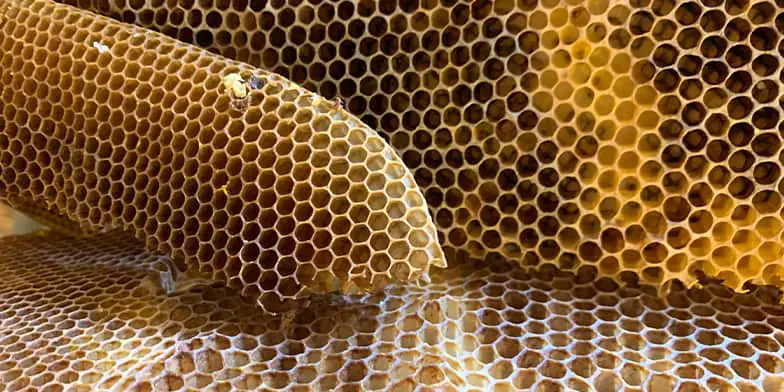
Bees will make cells with wax to contain their young. The wax cells are first filled with pollen, and then the queen will lay an egg. Once the egg is laid, the worker bees will seal the cell with another layer of wax. This keeps the vulnerable larvae both fed and protected as it grows.
Honeybees also collect the nectar from flowers and store them in cells made of beeswax. Wax is perfectly suited to this task, being both malleable and strong. After filling a cell with nectar, the bees will again cap them with wax. It’s through this process that bees will store their honey for winter. This is why honey contains a thin layer of wax.
How Do Bees Make Wax?
There are many different roles within a colony of bees. Within a hive you’ll find a queen, drone bees, and many worker bees. It’s only the worker bees, and in particular the young worker bees, that will produce wax. As we explored in a previous article on Bug Domain, these worker bees are entirely female, and do most of the grunt work around the hive.
Worker bees fly out in search of flowers to collect nectar. After they have collected as much as they can safely carry, they return to the beehive to turn the nectar into honey and wax. Passing the nectar over to the workers who are inside the hive, they’ll head back out for more.
The worker bees inside the hive have an enzyme in their bodies that they will add to the nectar. This will dissipate the water in the nectar, and when that process is complete the bees will put the converted nectar into the honeycomb for storage. Eventually, this substance will turn into the honey you would recognize.
Worker bees have a very short life. They only live for a month. They will also only be able to make wax when they are between 10 to 18 days old. Their wax glands gradually decline, and after their 18th day most worker bees will retire from the wax production game and move on to different tasks. That said, older bees may help their younger companions in making wax the hive needs.
During their wax-making period, the young worker bees will consume honey, and their special glands will convert the honey’s natural sugar into wax. They will discharge this wax through small pores in their abdomen. Newly created beeswax comes out as a liquid, but quickly hardens on contact with air.
When the wax first comes out, it looks transparent. As it takes for form of tiny flakes, bees will work together to pass the wax to each other using their mouths. Alternatively they can also use their back legs to grab the flakes and get them into their mouths by themselves. This is how wax is created, and then moved about the hive.
To use the wax as a construction material the bees first need to make the wax softer. To achieve this, they will simply chew on it for a while. Once the wax becomes malleable and white from the saliva, it’s ready to be used to extend or repair sections of the hive.
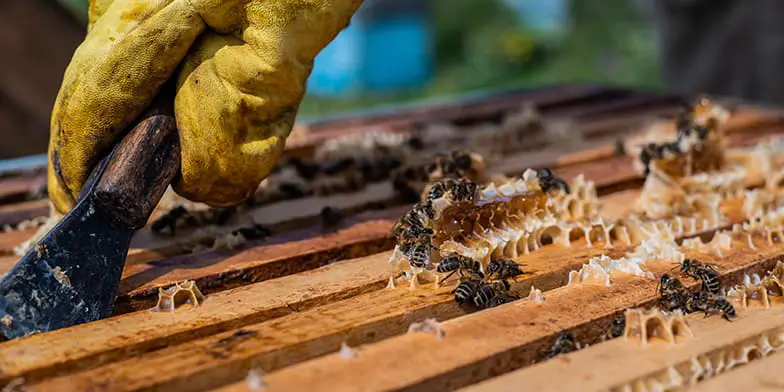
When Do Bees Make Beeswax?
Most kinds of bees make wax between April and June. These months are commonly the active growth phase of bee colonies. During this time the bees must produce wax to make the hive strong, anticipating a lot more honey and larvae in the near future.
The production of wax depends on the following factors:
- Amount of nectar that the workers are able to collect
- Egg laying and rearing potential of the hive
- Whether or not the hive is preparing for a new queen
- Temperature of the environment
Is Bees Wax Actually Wax?
There are many different kinds of wax. You might be wondering if the beeswax we’ve been looking at today is the same as the wax you might see in the market. The answer to that is: Maybe or maybe not!
Beeswax is a natural wax, produced by the honey bee, Apis mellifera. It is collected from honeycomb, and contains entirely natural substances. Many types of wax you will find in stores are artificially made. Commercial waxes will often contain artificial chemicals and are made from a variety of proceses.
What Does Beeswax Contain?
The contents of the natural wax produced by bees can vary based on the species of bee. However, the common compounds found in beeswax are alkenes, alkanes, fatty acids, monoesters, diesters, and hydroxymonesters. Some even may contain fatty alcohols and Hydroxy Monesters.
Beeswax contains nothing by harmless natural elements, and are edible. You might have seen beekeepers selling beeswax still dripping with honey.
For your own safety, please note that beeswax is not edible if mixed with other chemicals.
Is Beeswax Poop?
Now we’re getting to the real questions!
Some people who don’t know much about honey bees (for shame!) might wonder if beeswax is simply their poop. It’s an interesting conclusion, and I don’t blame them for thinking so because the wax does come out from glands right under the bee’s abdomen near their sting.
Just to be clear, beeswax is definitely not bee poop. The substance is actually closer to the ear wax secretions that humans experience. So if the idea of using insect excrement concerns you, you can rest easy. Beeswax is a specially produced substance that has many benefits to both the bees and us.
What Are The Uses Of Beeswax?
Bees are not the only living things that benefit from wax. Humans have used beeswax for a variety of purposes since ancient times, from medicines, candles, to furniture polish!

Here are some examples of how modern day people are finding different ways to use beeswax. You might be surprised!
- Candles: You can make homemade candles with beeswax. Many stores also sell lemon-scented candles made of beeswax and lemon.
- Skincare products: Beeswax is an excellent moisturizer. It is now used in lip balm, lip gloss, moisturizers, and face masks for its healing properties. They are also great at treating heel cracks.
- Furniture Polish: You can use beeswax with olive oil to polish your furniture and make them look new again. Beeswax can also make your bronze items sparkle!
- Waterproofing shoes: You do not want to ruin your canvas shoes walking in rain. Rubbing some beeswax onto the material will make your shoes waterproof.
- Natural Seals: Beeswax can be used to seal off the lids of food containers/jars. You just have to melt the wax and apply it around the lid.
These are just a few of the useful ways humankind has utilized beeswax. With safe and respectful treatment of these amazing insects, I expect there are many more waiting to be discovered.
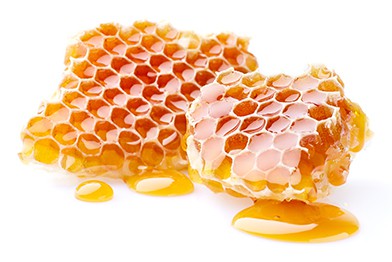
Driven by a passion for those tiny creatures that rule our world, we at Bug Domain strive to be your go-to resource for information on insects.


